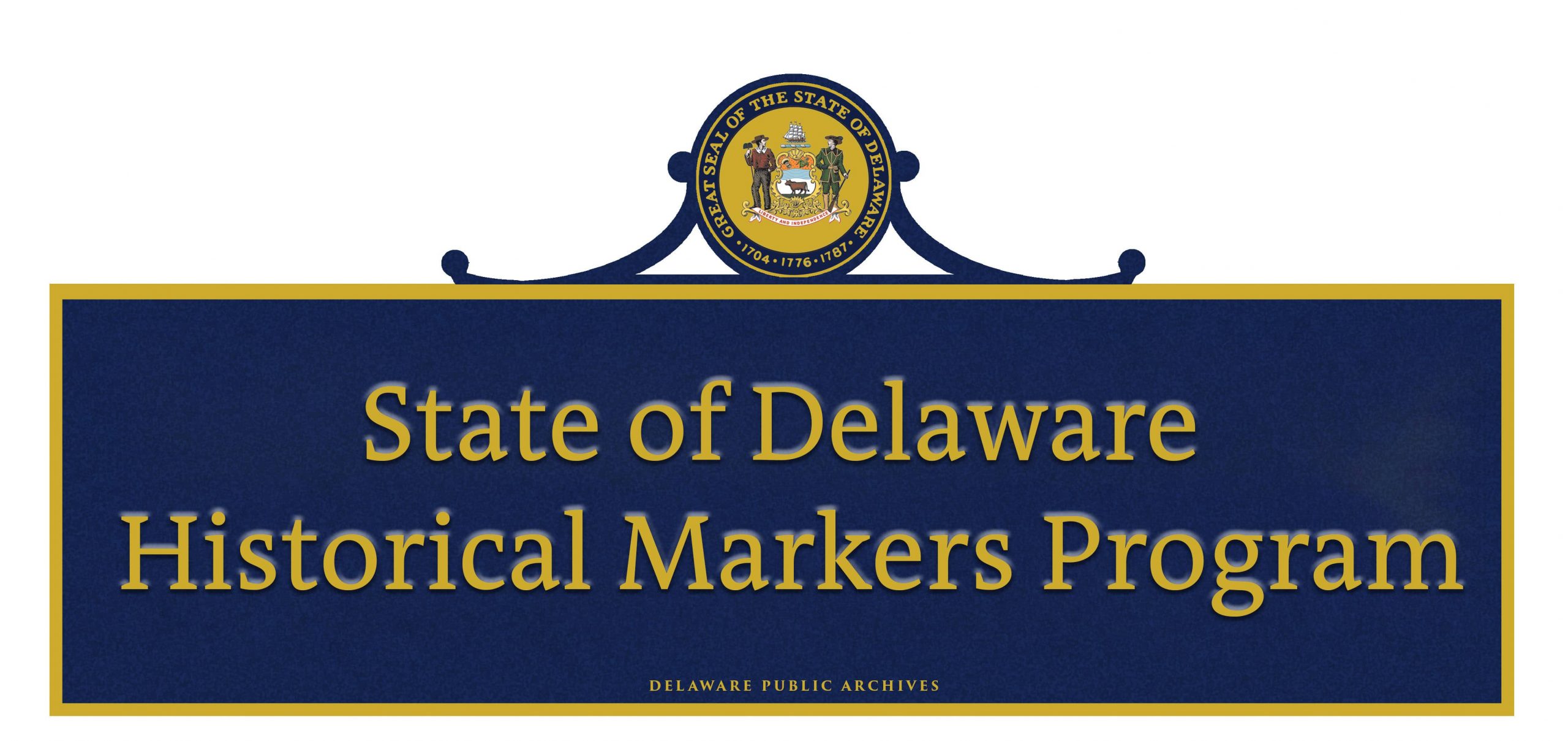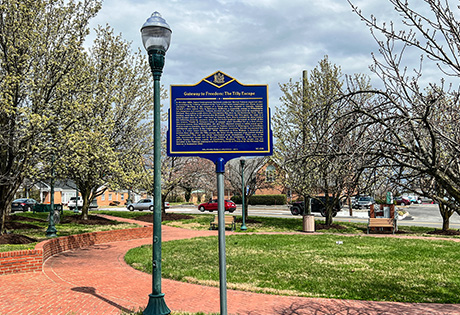

 In October 1856, famed Underground Railroad conductor Harriet Tubman organized what is considered by Tubman scholars to be “one of her most complicated and clever escape attempts.” Working at the request of a fiancé who had escaped to Canada, Tubman located a slave named Tilly in Baltimore. Believing a steamship voyage to Philadelphia too dangerous and expensive, Tubman decided she and Tilly would travel by steamboat to Seaford, first sailing south down the Chesapeake Bay then up the Nanticoke River. Upon landing, most likely at the present-day Riverwalk, Tubman and Tilly spent the night at a hotel located atop the hill – now home to Gateway Park. Nearly arrested by slave traders the following morning, accounts note that the hotel landlord intervened on behalf of the two women. Thanks to Tubman’s letter of passage which identified her as a free African American woman from Philadelphia, she and Tilly obtained passes to safely travel north, first by train to Camden, then by carriage to Thomas Garrett in Wilmington. A well-known abolitionist and leader in the Underground Railroad movement, Garrett documented the story in a letter dated October 27, 1856. Addressed to Eliza Wigham in Scotland and written three days after the Tilly escape, the letter vividly recounts what Garrett deemed a “remarkable” trip and one which “manifested great shrewdness.” Tilly’s story is the only documented escape led by Harriet Tubman at the headwaters of the Nanticoke, which border her home county of Dorchester, Maryland. The Tilly escape site was included in the National Underground Railroad Network to Freedom by the National Park Service in September 2013.
In October 1856, famed Underground Railroad conductor Harriet Tubman organized what is considered by Tubman scholars to be “one of her most complicated and clever escape attempts.” Working at the request of a fiancé who had escaped to Canada, Tubman located a slave named Tilly in Baltimore. Believing a steamship voyage to Philadelphia too dangerous and expensive, Tubman decided she and Tilly would travel by steamboat to Seaford, first sailing south down the Chesapeake Bay then up the Nanticoke River. Upon landing, most likely at the present-day Riverwalk, Tubman and Tilly spent the night at a hotel located atop the hill – now home to Gateway Park. Nearly arrested by slave traders the following morning, accounts note that the hotel landlord intervened on behalf of the two women. Thanks to Tubman’s letter of passage which identified her as a free African American woman from Philadelphia, she and Tilly obtained passes to safely travel north, first by train to Camden, then by carriage to Thomas Garrett in Wilmington. A well-known abolitionist and leader in the Underground Railroad movement, Garrett documented the story in a letter dated October 27, 1856. Addressed to Eliza Wigham in Scotland and written three days after the Tilly escape, the letter vividly recounts what Garrett deemed a “remarkable” trip and one which “manifested great shrewdness.” Tilly’s story is the only documented escape led by Harriet Tubman at the headwaters of the Nanticoke, which border her home county of Dorchester, Maryland. The Tilly escape site was included in the National Underground Railroad Network to Freedom by the National Park Service in September 2013.
SC-233: Re-installed in 2014.
120 Front Street, Seaford, DE 19973